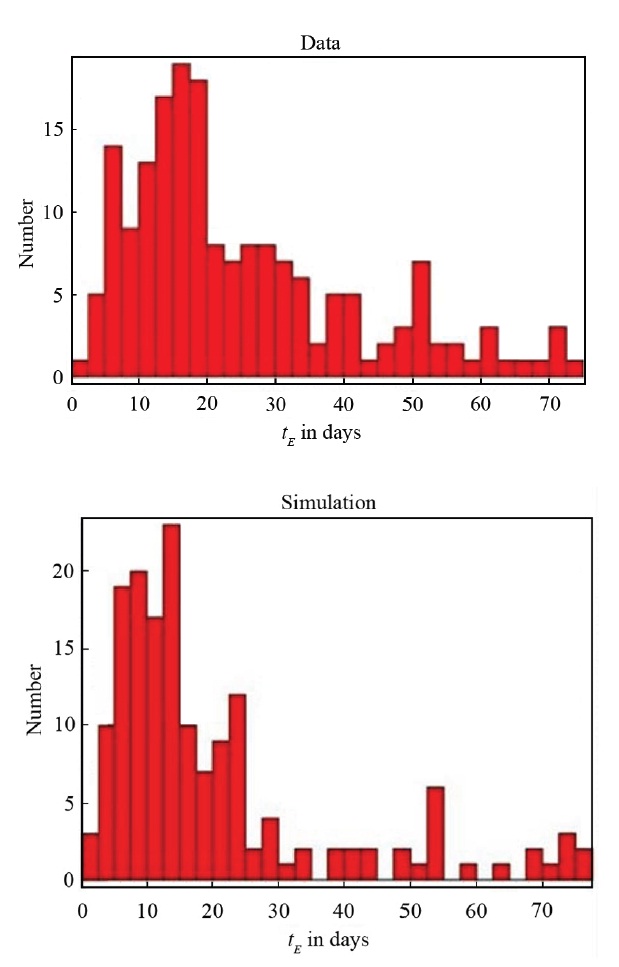



1. INTRODUCTION : ELEMENTARY DETAILS OF SIMPLE GRAVITATIONAL MICROLENSING
We all know that if a forground object, like a planet or its moon, passes in front of a background star we witness an event called an occultation. We know also that if a distant object in the close vicinity of a star passes in front of that star we witness an event called either an eclipse, as in a close binary star, or a transit, as in the case of a planet orbiting a parent star. However, if an object midway between us and a distant star passes in front of the background star an entirely new phenomenon is predicted by General Relativity, originally suggested by Einstein (1936), whereby the background star’s light is magnified; this is called microlensing. Light rays from the distant star are deflected by the intervening object’s mass, which acts as the gravitational lens, such that instead of a single train of photons reaching the observer, many more trains of photons reach him because of light bending, hence increasing the background star’s brightness manyfold1. While theoretically this brightening could be nearly infinite, finite source size effects limit how large an amplification could occur for very close alignment, but a few microlensing events produced brightenings of several hundreds (5-7 mag). Naturally an intervening single object can only do this once, so microlensing is a one time event for this situation. Furthermore, General Relativity predicts that there is no wavelength dependence for this phenomenon, so events are achromatic and can be distinguished from instrinsic stellar variability.
The observational consequences of the optics of gravitational microlensing were detailed by Paczy?ski (1986). He showed that a combination of the distance to the background star
Since both background star and lens move in the gravitational potential of the Galaxy, the relative velocity V across the line of sight (los) crossing
Alcock et al. (2000, Fig. 10) plotted the distribution of microlensing events toward the galactic center; their semi-logarithmic plot has a distinctly bimodal appearance2. Using a mass model for the galactic disk and bulge/bar, they also provided a comparison of the distribution of
1 See power-point presentation cited in Abstract for a cartoon of this situation.
2 See power-point presentation cited in Abstract.
2. OUR SAMPLE OF CROSSING TIMES
Values of
From Eq. (1) the equation containing the unknown variables yields:
We generate
Distances
For the triaxial bar with central luminosity density
where
In these coordinates the galactic center is at the origin. Note that Alcock et al. (2000) assume that
Transverse orbital velocities of lens and background star are computed from a standard galactic rotation model of Han and Gould (1995), which is consistent with the density distributions above.
Masses are chosen from observed mass function of Main Sequence and white dwarf stars. For main sequence masses a combination of Scalo’s (1986) initial mass function and a rapidly falling three segment power law form of Kroupa et al. (1993) were used:
We have not modeled alternative Main Sequence mass functions (log-normal distributions) for low mass stars per Chabrier (2003) or Bochanski et al. (2010), nor included sample events with
Gaussian distributions of both DA and DB white dwarf mass functions of Kepler et al. (2007), with the following mean masses and their dispersions, were used:
Fig. 1 shows our observed sample of blending-corrected
The KS two-sample test was used to see if the two distributions had been drawn from the same parent distribution. For any acceptable agreement two mass distributions were essential. We find that the white dwarf contribution should be as high as about 25% to explain the data well. Out of this contribution, we needed about 86% DA and 14% DB dwarfs.
There was very poor agreement if all the source stars were chosen only from the bar. This is contrary to Alcock et al. (2000) who had taken all sources to be in the bar. Our analysis shows that 90% of the sources come from the bar while the rest must be drawn from the disk population. Excellent agreement was obtained for all the lens distances chosen equally from the disk and bar populations.
The KS test indicates that our simulations agree with the observed distribution with a significance level > 97%. Our analysis shows that the possible bimodality of tE could be due to 25% white dwarfs and 75% Main Sequence stars. This is consistent with other estimates of the white dwarf mass contribution to the Galaxy (Binney & Merrifield 1998).
